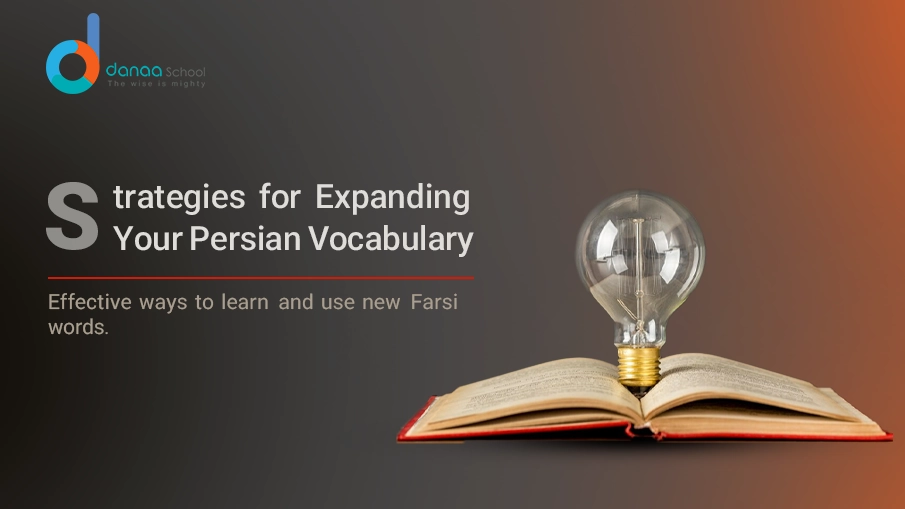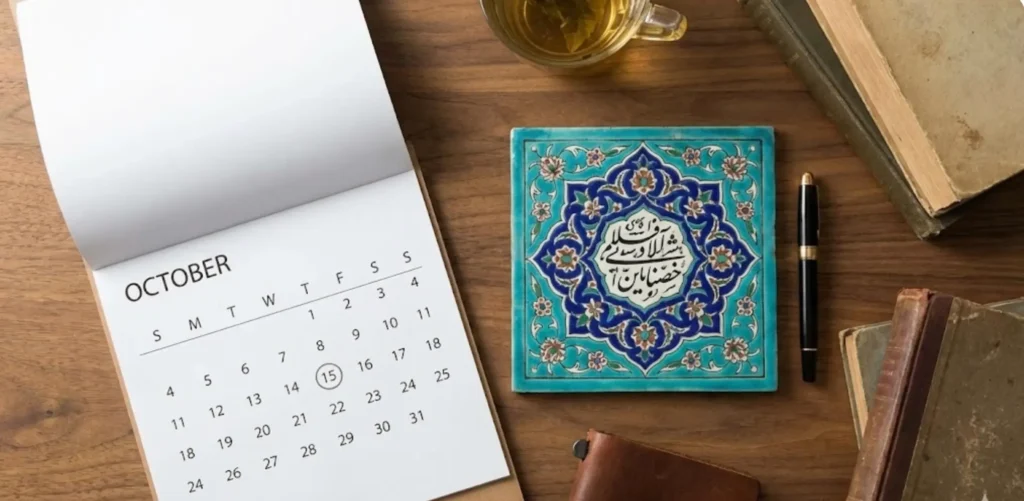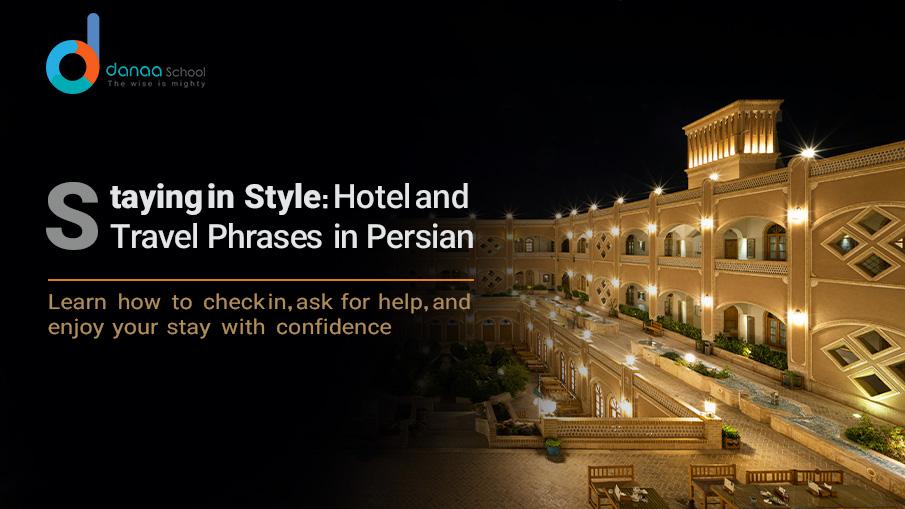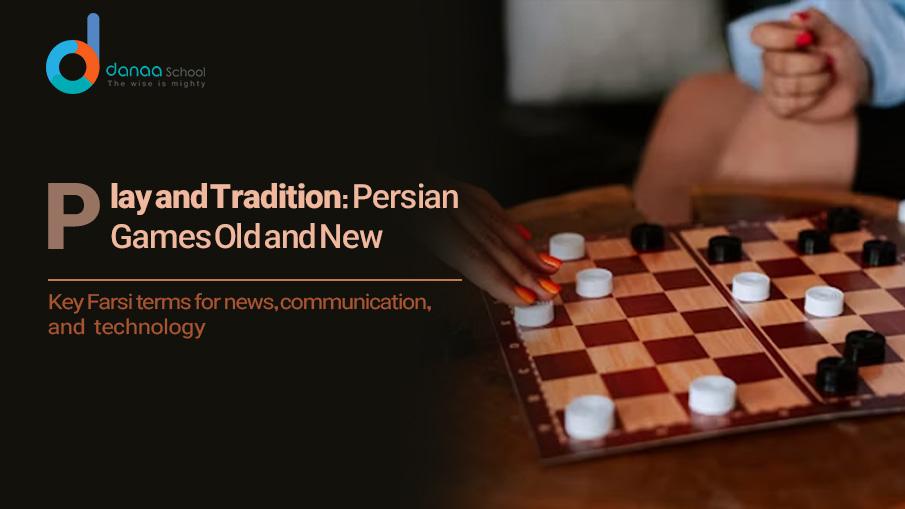Learning a new language like Persian (Farsi) opens doors to a rich cultural and historical heritage. Expanding your vocabulary is one of the most crucial steps in mastering any language. While Persian grammar might be simpler than other languages, building a strong vocabulary in Persian requires consistent effort and the right techniques.
This guide explores practical and proven tips to learn Persian vocabulary. From leveraging digital tools like Danaa School’s innovative programs to traditional methods like flashcards and immersion, these strategies will accelerate your Persian vocabulary journey.
Why Expanding Your Persian Vocabulary Matters
Vocabulary is the backbone of communication. When learning Persian, having a robust vocabulary allows you to:
-
- Express Yourself Clearly: Whether speaking or writing, knowing the right words ensures effective communication.
-
- Understand Native Speakers: Persian speakers often use idiomatic expressions and a variety of synonyms that require a solid vocabulary to follow.
-
- Immerse in Persian Literature: Persian poetry, literature, and films are renowned worldwide. A strong vocabulary lets you appreciate these works in their original beauty.
-
- Improve Language Fluency: Vocabulary is a foundation for mastering grammar and sentence structures.
Start with Commonly Used Words
One of the easiest ways to learn new Persian words is to focus on frequently used vocabulary. Begin with daily essentials like:
-
- Greetings: سلام (Salam) – Hello, خداحافظ (Khodahafez) – Goodbye
-
- Numbers: یک (Yek) – One, دو (Do) – Two
-
- Basic phrases: لطفا (Lotfan) – Please, ممنون (Mamnoon) – Thank you
Practice these regularly to build confidence and lay a foundation for more complex vocabulary.
Use the Power of Flashcards
Flashcards are a classic and effective tool for memorizing Persian words. You can create physical flashcards or use apps like Anki or Quizlet for a more interactive experience. Here’s how to use them effectively:
-
- Write the Persian word on one side and its English meaning on the other.
-
- Add a sentence using the word to understand its context.
-
- Review them daily to reinforce memory.
Persian Media is Important!
Consuming Persian media is an excellent way to learn new words in context. Here’s how to maximize the benefits:
-
- Watch Persian Movies and TV Shows: Films like Children of Heaven or TV series like Shahrzad introduce conversational vocabulary.
-
- Listen to Persian Music: Songs often use poetic and repetitive language, making it easier to remember new words.
-
- Follow Persian Podcasts: Programs like Danaa School or Radio Javan o feature discussions that enrich your vocabulary.
Create a Persian Word Journal
Maintain a journal to record and review new Persian words daily. Organize it into sections like nouns, verbs, and adjectives. Include:
-
- The word and its meaning
-
- Its pronunciation using phonetics
-
- Example sentences
Reviewing your journal regularly helps cement these words in your memory.
Use Mnemonics for Memorization
Mnemonics, or memory aids, make it easier to remember difficult Persian words. For example:
-
- Word: قورباغه (Ghoorbagheh) – Frog
-
- Mnemonic: Imagine a frog “gurgling” in a pond to associate the sound with the Persian word.
Creative associations like this turn challenging words into memorable stories.
Practice Word Grouping
Grouping words by category improves retention. For example:
-
- Colors: قرمز (Ghermez) – Red, آبی (Abi) – Blue, سبز (Sabz) – Green
-
- Food: نان (Nan) – Bread, برنج (Berenj) – Rice, گوشت (Goosht) – Meat
This method lets you learn multiple related words simultaneously, making recall easier.
Set Achievable Goals
Consistency is key in language learning. Set small, manageable goals, like:
-
- Learning 5 new words daily
-
- Reviewing previously learned vocabulary weekly
-
- Practicing writing Persian sentences using these words
Engage in Reading Persian Texts
Reading is an excellent way to see Persian words in context. Start with:
-
- Children’s Books: Simple language and illustrations aid comprehension.
-
- Bilingual Books: Compare Persian text with English translations.
-
- Poetry: Explore the works of Rumi or Hafez to expand formal and poetic vocabulary.
Learn Persian Roots and Affixes
Understanding Persian word roots and prefixes/suffixes unlocks the meaning of many related words. For instance:
-
- Root: کتاب (Ketab) – Book
-
- Related Words: کتابخانه (Ketabkhaneh) – Library, کتابی (Ketabi) – Related to books
This approach helps you deduce meanings without looking up every new word.
Engage with Danaa School for Structured Learning
Danaa School offers tailored programs designed to make learning Persian fun and engaging. Learn Persian Vocabulary with Danaa School to enjoy interactive lessons combining vocabulary practice and cultural insights. These structured lessons provide:
-
- Thematic Vocabulary Lists: Organized by food, travel, and family topics.
-
- Audio-Visual Aids: Helping you associate words with their correct pronunciation and context.
-
- Personalized Progress Tracking: Ensures you retain what you’ve learned.
Find Your Ideal Teacher
At Danaa School, you can choose your Farsi tutor from a selection of qualified and experienced teachers. Begin an exceptional journey into the world of Persian language!
Book Your Trial Lesson
Incorporate Persian into Daily Life
Integrate Persian into your routine by:
- Labeling household items with Persian words
- Thinking or journaling in Persian
- Using Persian for social media captions or posts
Such immersion solidifies your vocabulary through repetition.
Practice Active Recall
Instead of passively reviewing words, actively test yourself. For instance:
- Cover the meaning and try recalling it from the Persian word.
- Practice spelling and pronunciation out loud.
Active recall strengthens neural connections, making words easier to remember.
Explore Persian Proverbs and Idioms
Proverbs and idioms add richness to your vocabulary. For example:
- Phrase: آب در کوزه و ما تشنه لبان میگردیم
- Meaning: The solution is close, but we overlook it.
Learning such phrases deepens cultural understanding and enhances expression.
FAQs
How long does it take to learn basic Persian vocabulary?
Learners can acquire basic conversational vocabulary in 3–6 months with consistent effort.
What is the best way to practice Persian pronunciation?
Use apps or platforms like Forvo to listen to native speakers and mimic their pronunciation.
Can I learn Persian vocabulary without learning grammar?
While learning words in isolation is possible, understanding grammar improves usage and fluency.
What are some fun ways to learn Persian words?
Watching Persian cartoons, playing language-based games, or joining Persian-speaking social groups makes learning fun.
Is Persian a difficult language to learn?
Persian has a straightforward grammar system, making it relatively easier than other languages. Consistent vocabulary practice simplifies the process.
What resources does Danaa School offer for learning Persian?
Danaa School provides thematic vocabulary lessons, audio-visual materials, and interactive activities for a holistic learning experience.
Conclusion
Learning new words in Persian is an enriching journey beyond language acquisition to cultural discovery. You can build a strong Persian vocabulary quickly and effectively by combining modern tools like Danaa School’s programs with traditional methods like flashcards, mnemonics, and immersion.
Stay consistent, set achievable goals, and enjoy connecting with a beautiful and expressive language. Sign up to learn Persian Vocabulary now.
Want to Learn Farsi at Danaa School?
Here are the best resources for you!










